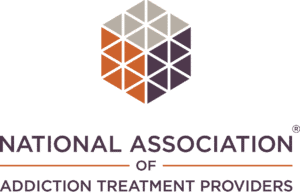Strategies for Avoiding Workplace Burnout: 3 Key Insights
In today’s fast-paced work environment, workplace burnout has become increasingly prevalent. Employees in many fields often feel overwhelmed and stressed, struggling to balance work and personal life. For your well-being and the organization’s success, it’s important to spot signs of burnout and use effective strategies to prevent it.
Understanding Workplace Burnout
Before diving into strategies, it’s essential to understand what workplace burnout entails. Burnout isn’t just feeling tired or stressed occasionally; it’s a state of emotional, physical, and mental exhaustion caused by prolonged stress or excessive workload. Symptoms of burnout include feelings of hopelessness, lack of control, and decreased motivation.
Common symptoms include:
- Feeling drained and depleted
- Loss of motivation and interest
- Increased cynicism and negativity
- Reduced productivity
- Difficulty concentrating
- Health issues such as headaches or insomnia
Identifying these signs early can help individuals proactively avoid burnout before it escalates.
Key Insights to Prevent Workplace Burnout
Establishing Boundaries and Prioritizing Self-Care
Setting clear boundaries between work and personal life is crucial for preventing burnout. Here are some actionable steps:
- Define Work Hours: Clearly define when your workday starts and ends. Stick to these hours as much as possible to prevent work from encroaching on personal time. Implementing flexible scheduling options can further support this balance, allowing for a more manageable work pace.
- Take Breaks: Take regular breaks during the day to recharge. Use this time to walk briefly, do deep breathing exercises, or step away from your desk. Incorporating mindful breathing and stress & burnout prevention exercises can enhance the effectiveness of these breaks.
- Prioritize Tasks: Use time management techniques like the Eisenhower Matrix to prioritize tasks based on importance. This helps focus on essential functions while delegating or postponing less critical ones. Effective prioritization also helps manage work-related stress and reduce burnout risks.
By establishing boundaries and prioritizing self-care, individuals can create a healthier work environment and reduce the risk of burnout.
Building a Supportive Work Culture
Organizational culture plays an essential role in employee well-being. Companies that foster a supportive work environment can help prevent burnout. Key strategies include:
- Encourage Open Communication: Create channels for employees to voice concerns or seek support without fear of judgment. Regular check-ins with managers can provide opportunities to discuss workload and stress levels. Encouraging transparent discussions about burnout signs can lead to a more supportive workplace culture.
- Promote Work-Life Balance: Offer flexible work arrangements that include telecommuting or flexible hours to accommodate diverse needs. Encourage employees to use their vacation time and discourage a culture of overworking. Remote workers, for example, benefit greatly from flexible scheduling that allows for better balance and reduced stress.
- Provide Resources: Offer resources such as employee assistance programs (EAPs), wellness initiatives, or stress management workshops. These resources can equip employees with tools to manage stress effectively. Access to health care and mental health days can further support employees in managing chronic workplace stress.
Building a supportive work culture enhances employee satisfaction, boosts productivity, and reduces turnover rates.
Investing in Professional Development and Skill Enhancement
Continuous learning and skill development are not only beneficial for career growth but also for preventing burnout. Here’s how:
- Set Career Goals: Encourage employees to set clear career goals and support them through training programs or mentorship. Achieving career milestones can enhance job satisfaction and mitigate feelings of hopelessness.
- Promote Learning Opportunities: Provide access to online courses, seminars, or workshops that allow employees to acquire or deepen new skills. This not only enhances job satisfaction but also stimulates intellectual engagement. Investing in professional development can help combat burnout and foster a more resilient workforce.
- Encourage Job Rotation: Offer opportunities for employees to explore different roles or departments within the organization. Job rotation can prevent monotony and keep employees motivated. This approach addresses burnout risks associated with job stagnation and promotes a sense of control over one’s career trajectory.
Investing in professional development shows employees that their growth is valued, which can significantly contribute to job satisfaction and reduce burnout.
Conclusion
In conclusion, preventing workplace burnout requires a proactive approach addressing both individual and organizational factors. Employees can mitigate stress and maintain well-being by establishing clear boundaries, fostering a supportive work culture, and investing in professional development. Employers play a crucial role in creating environments where employees can thrive, ultimately leading to higher productivity and retention rates.









